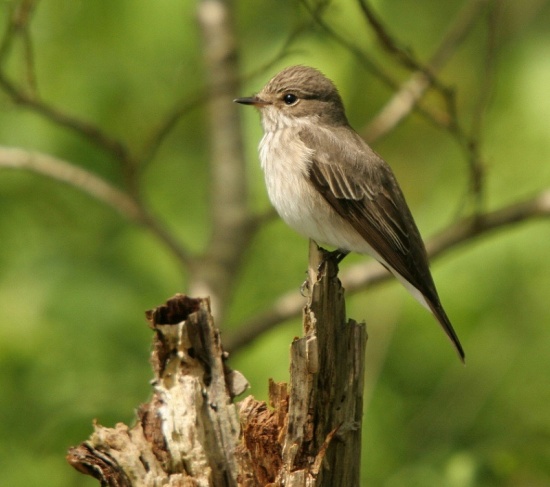| Line 7: | Line 7: | ||
==Distribution== | ==Distribution== | ||
| − | Spotted Flycatchers are found throughout Britain and Ireland but are far more scarce in the north of Scotland and the west coast of Ireland. Their numbers have declined terribly since the sixties. | + | Spotted Flycatchers are found throughout [[Britain]] and [[Ireland]] but are far more scarce in the north of [[Scotland]] and the west coast of Ireland. Their numbers have declined terribly since the sixties. |
==Taxonomy== | ==Taxonomy== | ||
Revision as of 16:25, 16 June 2008
- Muscicapa striata
Identification
L 13.5-15 cm. Small to medium sized, rather slim passerine. Lacks any obvious features though in profile is has a rounded crown and the head appears rather large. Greyish brown upperparts and off-white underparts with dark streaking on the breast and sides of throat as well as the forehead and forecrown. It has a dark bill and black, short legs, dark eyes with narrow pale eye-ring. Sexes are alike. Has an upright posture and usually sits with tail flicking whilst it watches for flying Insects, then quickly flies out to snap it's prey and returns, often to the same tree branch, post or wire fence.
Distribution
Spotted Flycatchers are found throughout Britain and Ireland but are far more scarce in the north of Scotland and the west coast of Ireland. Their numbers have declined terribly since the sixties.
Taxonomy
Habitat
Breeds in gardens, parks and in forests, often appearing to prefer spots with small glades and openings among tall deciduous trees.
Behaviour
A summer visitor that winters in Africa. Nests in recess on tree trunk or building, often against a wall on branch of climbing shrub. Will also readily occupy open-fronted boxes.
The nest is made up of twigs, moss and grass and is then usually lined with hair, wool and feathers. One or two clutches of pale buff eggs with reddish brown blotches are produced. The young are fed by both parents, mainly on small flies.
Bird Song
<flashmp3>Muscicapa striata (song).mp3</flashmp3>
Listen in an external program




